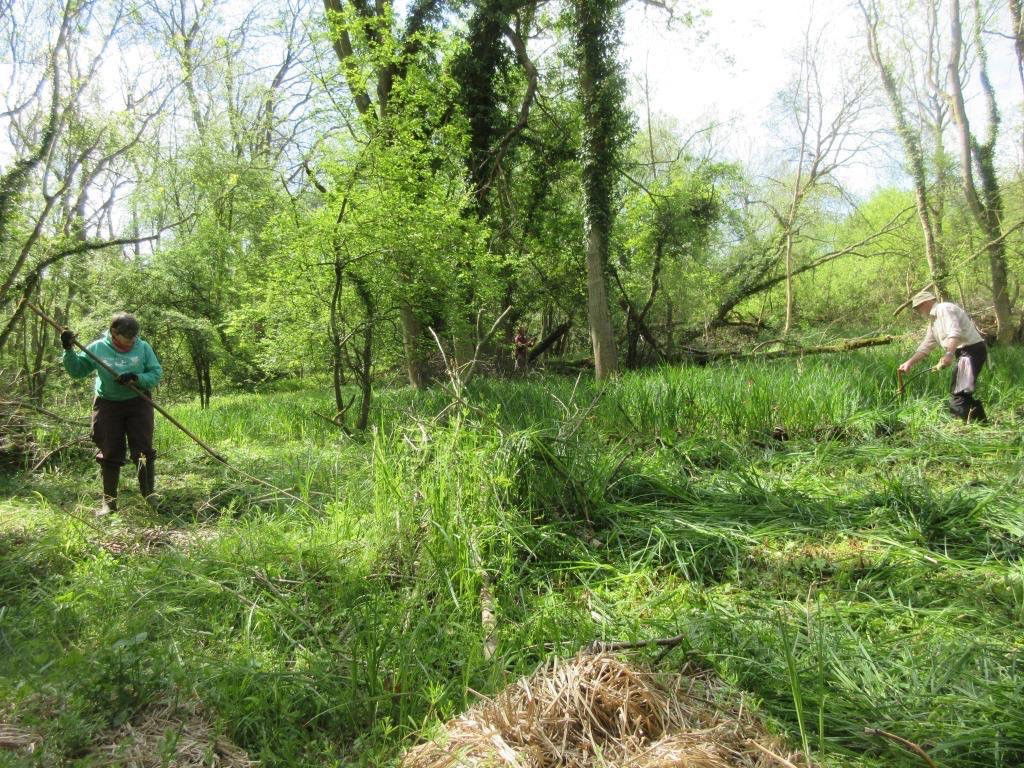Hinksey Heights: Fen Restoration and Newt Conservation
9th November 2019
At Hinksey Heights, on the edge of Oxford: we’re restoring alkaline fen, one of the richest and most threatened habitats for freshwater biodiversity and making new clean water ponds for great crested newts.

The Oxfordshire Fens Project began work on Hinksey Heights fen in August 2018. We’ve focused on the management of rank vegetation, and especially the control of common reed Phragmites australis which had swamped the site, to allow special wetland plants that depend on fen environments a chance to grow. We’re also testing the careful introduction from local fen sources (within 5 km of the site) of plants characteristic of alkaline fens which we know to be absent from the site. Many fen species lack a long-lasting seedbank from which they might reappear even with good management, so translocation is a good option to recreate the fen communities which would have occurred there naturally.
Pre-restoration monitoring was undertaken in July 2018 and the first results after management collected in August 2019. Already several plants we expect to see in alkaline fen have emerged from the seed bank, including blunt-flowered rush Juncus subnodulosus and fen bedstraw Galium uliginosum. Several of the plants specially introduced have also become well-established, including the ‘ecosystem engineer’ marsh lousewort Pedicularis palustris, which parasitises and weakens common reed, and parsley water dropwort Oenanthe lachenalii which is in danger of extinction in Oxfordshire because it is found in so few places.

Reaching our management targets in terms of community composition and structure will take several years. But the monitoring shows we’re already reaching some of the our short-term targets: management has reduced the dominance of the tough species such as common reed and got the height of the vegetation down to a more desirable level in one of the two management areas – this is important as it will help the fen community develop, and let the more sensitive plants through.
The fen work has been made possible with funding from The Trust for Oxfordshire’s Environment. If you would like to get involved contact Judy Webb judy.webb@virgin.net or Ellie Mayhew emayhew@freshwaterhabitats.org.uk.
Elsewhere on the site the Newt Conservation Partnership have just created two new great crested newt ponds as compensation habitat in South Oxfordshire for the Nature Space District Level Licensing Scheme.

The newt ponds look great, but now we have to wait! We’ll need the ponds to fill, but with all this wet weather that was happening almost as the diggers left site! There are great crested newts nearby, within 500 m (one of the criteria of the scheme, which determines where to make the ponds, so that newts can colonise them naturally), so it’s just a question of time before the first newts move in. Elsewhere in the project, some ponds have been colonised by great crested newts in as little as 6 months following the new ponds being built.
You can read more about the work of the Oxfordshire Fens Project and the Newt Conservation Partnership here:
Photo credits:
- Fen bedstraw by Ivar Leidus; Marsh lousewort by Christian Fischer; Parsley water-dropwort by Kristian Peters CC BY-SA 3.0 https://commons.wikimedia.org.
- Volunteers undertaking reed management at Hinksey Heights by Judy Webb
- New pond creation for great crested newts by Pascale Nicolet
